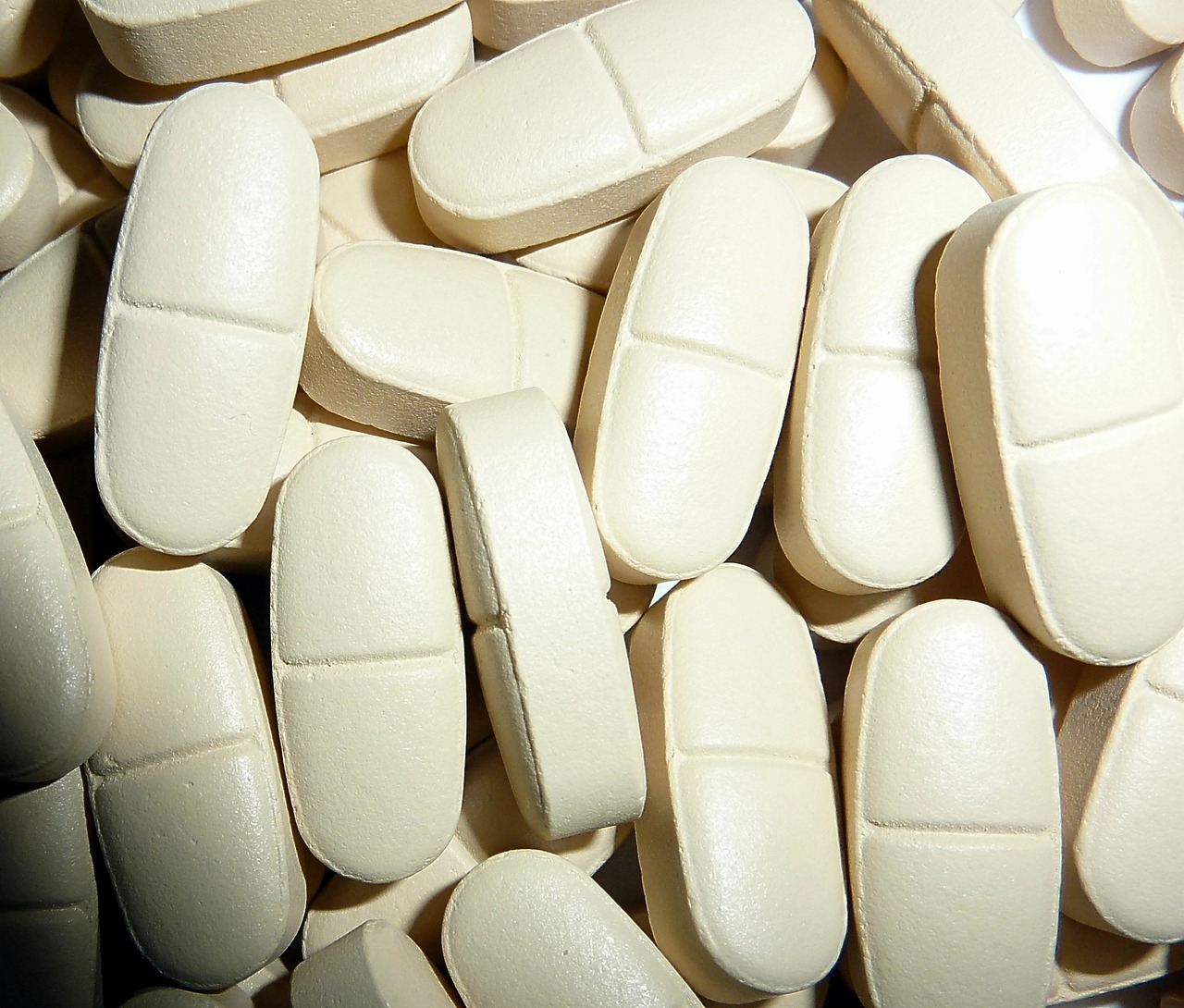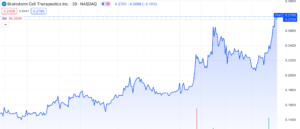BioPharma
CytoDyn’s Robust Platform Technology Keeps Expanding Into Breakthrough Therapy Designation Territory
Published
4 years agoon
By
Tom Rieder
- Leronlimab is an immunomodulator that targets many diseases
- Multiple indications being pursued in parallel
- Proven safety profile, novel mechanism of action, & ease of application enables quick label expansion strategy
- Breakthrough Therapy Designation possible for cancer and Long-Haulers
CytoDyn (OTCMKTS: CYDY) has made a number of recent announcements that when examined together add up to significant progress and potential that is not reflected in the current stock price which values the company at just under $1.0 billion market cap. Looking back over the last 12 to 18 months investors have witnessed CytoDyn move from being a one trick pony for HIV to a platform technology in cancer and a slew of other indications in the immunological category, with more in the future.
Elements of a Platform Technology
A platform technology in drug development involves getting a therapeutic approved for one indication so that it derisks future development costs and allows for a label expansion. Two examples of the most successful drug platform technologies are Merck’s KEYTRUDA with 31 approvals and Abbvie’s (ABBV) HUMIRA with 9. KEYTRUDA generated $14.4 billion and HUMIRA generated $19.8 billion in sales in 2020. What is so fitting about these examples is leronlimab is a combination cancer drug and immunological drug, so it’s a cross between KEYTRUDA and HUMIRA. If CYDY inks just one approval their drugs could quickly grow in magnitude because unlike MRK and ABBV who developed additional indications after the drug was approved, leronlimab’s other indications were done in parallel. Investors seem to be sitting on the sidelines wondering which indication will hit first. Leronlimab has 9 clinical trials on clinicaltrial.gov, 7 of which were started in 2020 including the cancer basket trial, metastatic Triple Negative Breast Cancer (mTNBC), NASH, Long-Haulers and Covid-19. Most of these have results coming out this year.
To Find out the inside Scoop on CYDY Subscribe to Microcapdaily.com Right Now by entering your Email in the box below
Data from Drugs.com
If CYDY gets just one indication in cancer approved then it’s possible that they could follow an even steeper trajectory in obtaining follow-on indications in cancer. The company has said in its latest press release that
“The positive advancement confirms leronlimab will be administered with a 700 mg dosage for patients in the mTNBC trial and Basket trial for 22 solid tumor cancers, as well as compassionate use, eIND and “right-to-try” patients.”
It’s possible that over time CYDY could get enough cancer indications to rival MRK based on them defining the mechanism of action (MOA) of the drug. HUMIRA got its first indication approved in 2002 for Rheumatoid Arthritis and has been able to get 12 approvals over 19 years. KEYTRUDA got its first approval in 2014 and has been able to get 29 approvals in 7 years. The next platform drug player might even be able to do it quicker.
Multiple Cancer Indications
The most recent press release also discussed the advancement of their triple negative breast cancer trial from a Phase 1b study to a Phase 2. This is important news that has not yet been digested by the investment community. Phase 1b studies are about gradually increasing a drug’s dose to find the optimal safe dose. The primary endpoint for phase 1b of the CytoDyn study was maximum tolerated dose (MTD). CYDY just announced that there were no dose limiting toxicities associated with 700 mg. This data establishes the maximum dose that could be available in the Phase 2 trial protocol. Investor frustration in the cancer trials seems to be centered on the slow pace of enrollment to get safety data on something that was so intuitively obvious. It took 1.5 years to garner 9 patients in the trial. That frustration was also part of the friction that led to the termination of Dr. Pestell for designing a suboptimal trial that was detailed in the litigation.
In contrast to the safety portion of the trial, the primary endpoint in CYDY’s Phase 2 is expected to be progression free survival (PFS) which is the most commonly used endpoint to measure efficacy in cancer trials. Phase 2 trials are designed to flush out if the treatment works. Leronlimab showed paradigm changing efficacy in mice models so it is expected to translate into positive human trials. These mouse models below show virtually a stoppage of metastasis. The lack of any tumor growth in the mice demonstrates how amazing this drug is at stopping metastasis.
Breast Cancer Research Article
One of the things that would be required for a breakthrough therapy designation (BTD) is an elucidation on the Mechanism of Action (MOA). The company has developed a great video on the mechanism of action and also did a TNBC presentation to academics that showed a 62% reduction in blood vessel area (p=.013) also known as angiogenesis. It’s really easy to spot the noticeable lack of blood vessels supporting the tumor in leronlimab treated mice. Although there are specific drugs like Avastin that are designed to target angiogenesis this was just a byproduct of the mechanism of action. The amazing outcome was a 87% reduction in tumor burden compared to the control.
Screenshot – TNBC Presentation
CytoDyn is well positioned for a BTD from the FDA if the soon to be released (2 weeks) trial results from the Phase 1 measure up to expectations. The data is expected to confirm the number of responders and stable disease rate. In the latest shareholder update, Dr. Scott Kelly, the chairman of CytoDyn, suggested that CytoDyn will eventually transform itself into an oncology company and this data point looks like it will be extremely positive. Any positive Phase 1b result could have a multiplier effect on valuation. Investors need to remember that there are 22 cancers in the basket trial which opens up even more potential in the future. The potential for an oncology platform is significant as more studies show immune modulating drugs such as CCR5 antagonists as promising therapeutic targets.
Rising NASH Leader
CYDY also recently announced enrollment of their final patient, patient #60, in their NASH trial. NASH is the unicorn of diseases for pharma companies: a large multi-billion market with millions of people affected in the US alone. Mouse studies conducted at the Cleveland Clinic showed leronlimab effectively “inhibited fatty liver development”, a precursor to NASH. To date no drug has been approved. Gilead Sciences (NASDAQ: GILD), French company Genfit (NASDAQ: GNFT), Intercept Pharmaceuticals (NASDAQ: ICPT) and, recently, NGM Pharmaceuticals (NYSE: NGM) all have failed trials. An oral CCR2/CCR5 antagonist, cenicriviroc, showed strong phase 2 results but the phase 3 trial was halted by Allergan (NYSE: AGN) due to an underwhelming inflammation effect and a strong placebo effect making available data harder to interpret. Galectin Therapeutics (NASDAQ: GALT) is developing the only drug that demonstrated efficacy in NASH. Unfortunately a conservative Phase 3 trial design and COVID-19 delays have pushed a top line read out into 2023 which could give time for CYDY to steal the lead with their Phase 2 readout provided they get drug approval on their MOA in 2022 and a label extension.
As an immune modulating antibody, leronlimab has a much more pronounced effect against inflammation compared to small molecule drugs such as cencriviroc or marivoroc. Unless the FDA surprises investors with a BTD, which is very possible, most are expecting that strong Phase 2 results released before the end of 2021 will precipitate a Phase 3 in early 2022. This advancement should increase the value of CYDY significantly given the large market potential and lack of any approved therapeutic. As HIV patients also are more susceptible to NASH, a platform drug that addresses both is of great interest.
HIV Franchise Forming
The HIV BLA submission is also expected to be fully submitted over the next couple of months. Putting aside the drama of the submission process, leronlimab continues to have the potential of disrupting the HIV industry given the once a week injection, high effectiveness, and strong safety profile. Gilead Sciences HIV combo pill, Biktarvy, which grew to $7.26 billion in 2020, has a black box warning, needs to be taken daily, and is not recommended for those with severe liver or kidney impairment. The current BLA is in combination with HAART, which is a custom designed set of therapeutics for each patient to manage the viral load. A monotherapy trial for CCR5-tropic HIV 1 infection showed a 92% reduction in viral load and no serious adverse effects. Once the BLA is approved, CYDY has stated they plan to apply for a label expansion for monotherapy. Given that all newly infected HIV patients and approximately 70% of existing HIV cases are CCR5-tropic, CYDY’s platform has the potential of dominating the future of HIV therapy.
But wait, there’s more! CYDY is also looking at the HIV prevention market. The market is currently at about $3 billion and is expected to double by the end of the decade. Gilead’s drug, Descovy, needs to be taken daily and has a host of side effects including nausea, worsening kidney function, and fat redistribution. Leronlimab if proved through clinical study will have significant advantages at potentially a once a month only self-administered injection. CYDY unveiled their strategy that they are exploring the launch of a prep study in Brazil possibly by the end of year. Given the successful clinical trials which have earned a fast track designation from the FDA, BLA approval is a question of when, not if. Under the steady hands of Dr. Recknor, investors should have much higher confidence in the BLA being submitted in 2021 with a PFUDA date in the first half of 2022.
Expanding Pipeline
Graft vs Host Disease (GvHD) is on the back burner for now but will be revisited in the coming year. CYDY has already received orphan drug status for this application which provides tax credits, fee waivers, and exclusivity for seven years. The Phase 2 trial was modified in 2020 to allow all trial participants to receive leronlimab. The potential market is expected to be $640M in 2026. The company had 2 compassionate use cases with stroke and both stroke patients responded well to treatment.
COVID-19 Trial Failures or Dose Justification?
Covid is still very much in play with the Delta and other variants causing a resurgence of infections. In the US alone infections have doubled in the last three weeks. While many bears on the message boards have claimed the mild/moderate and severe/critical trials were failures as they didn’t meet their primary endpoint, Phase 2 trials are exploratory in nature and serve to inform Phase 3 trial design. Even Dr. Janet Woodcock, acting head of the FDA, stated the severe/critical trial was hypothesis forming and supports additional trials. Since additional trials are continuing the results could hardly be judged a failure.
These trials did help CYDY learn more about the dosage, frequency and method of application as well as showed that leronlimab appears to work extremely well if given over a long enough period of time. The Phase 3 Brazil trials will soon start with the cards stacked in CytoDyn’s favor. The critical trial has IV injection, four doses over four weeks, a sufficient number of patients with 1 to 1 drug vs control, and a primary endpoint of “time to recovery”. This trial design is practically bulletproof because all the endpoints achieved statistical relevance in the Phase 2 in the USA. Given the continued high number of Covid cases in Brazil and 45 trial sites, the trials should fill up rapidly and interim results should be out sometime by the end of year. If anything close to last trial results of 82% pans out for critical patients, leronlimab will become the new standard of care for those that progress to critical. The FDA statement on leronlimab has set this up nicely as the view that leronlimab has “no clinical benefit” will change to leronlimab has “significant clinical benefit” and the FDA will be compelled to respond with approval. Becoming the standard of care for critical and possibly severe Covid will have a significant impact on CYDY’s valuation. An even bigger market is Long-Hauler’s. Preliminary results of the Phase 2 study were excellent, but failed to impress the market which wants to see the full results with biomarker data. Since the biomarker data speaks to the MOA of the drug, the release should add to their valuation and increase the potential for a big pharma partner to participate in a Phase 3. It also opens up the potential to go after other post viral syndromes such as chronic fatigue syndrome.
Other Blockbuster Indications
Possibilities seem endless with CCR5 implicated in strokes, Alzheimer’s, Parkinson’s, Lyme disease, MS and many other diseases. CytoDyn has a paradox of choice given the growing number of diseases that appear to have CCR5 as a potential target for therapeutics. Leronlimab’s unparalleled binding to CCR5, ease of application, and proven safety profile puts it in a strong position to become the standard of care in many of these over a multi year horizon. They are getting closer to getting approval than ever including many with the potential of breakthrough designation including long haulers. Just one approval will enable label expansion opportunities and off-label uses.
Financial Analysis & Risks
One of the biggest risk factors is potential dilution but the company has issued around 622 million shares while there are only 800 million authorized. In a worst case scenario this represents 22% dilution. In the latest Proactive video the CEO said the company has enough cash to last through the year. In April they raised $50 million in an above market offering at $10.00. Based on their latest 10-Q they are burning about $6.5 million per month which would give them about 8 months of burn before they run out and confirms the CEO’s statement. Management is also facing a challenge by an activist shareholder group called Advancing Leronlimab that appears to be composed of 2 ex-directors that were let go and both sued the company. If this group does get control of the company it may impair some of the drug trial development but the company is expected to get a major readout and file their BLA for HIV before the shareholder meeting expected in October. If the BLA is filed it is widely expected they will be granted approval given the incredible safety profile of the drug. So any potential upheaval would likely be after the company hits major drug development milestones.
There is a risk of a Refuse to File for the BLA, but most of those points should have been addressed in the upcoming filing. Traditionally once the BLA is accepted there is a very high probability of success. This is one of the supporting factors for a significantly higher stock price.
Investment Summary
A number of investors have been critical of CYDY’s placing multiple bets but in reality CYDY is building a platform drug that has the potential of surpassing HUMIRA’s revenues. HUMIRA is the number one drug in ABBV’s portfolio by far and has helped propel Abbvie’s market cap to over $200B. We will see CYDY’s platform strategy start to unfold over the rest of 2021 as various trial results come in. Given the current stock price there is significantly more upside than down for the patient investor that realizes it is still all about the science. We will be updating on CYDY when more details emerge so make sure you are subscribed to Microcapdaily so you know what’s going on with CYDY.
Disclosure: we hold no position in CYDY either long or short and we have not been compensated for this article.
You may like
-


Bioxytran (OTCMKTS: BIXT) Peer-Review Published Showing Functional Cure for COVID-19
-


CytoDyn, Inc. (OTCMKTS: CYDY) Stock Price Corrects Slightly After Reaching September 2022 Levels
-


BioXyTran Inc (OTCMKTS: BIXT) Crushes Primary Endpoint, Expected to Achieve Unicorn Status in New Year
-


CytoDyn Inc (OTCMKTS: CYDY) On Watch as Company Hires Ambitious New CEO Who Charts Path Forward (Update on leronlimab)
-


CytoDyn Inc (OTCMKTS: CYDY) Under Accumulation as New President Determines Path Forward for leronlimab
-


CytoDyn Inc (OTCMKTS: CYDY) Breaking Out Northbound as Biotech Hires New President, Raises $21.8 million & Sets Shareholders Meeting for August 31
7 Comments
Leave a Reply
Cancel reply
Leave a Reply
BioPharma
Brainstorm Cell Therapeutics’ (NASDAQ: BCLI) Post-Setback Resurgence: Unpacking FDA Impact & Market Expectations
Published
2 years agoon
November 30, 2023
Brainstorm Cell Therapeutics (NASDAQ: BCLI) continues to gain momentum with a surge of over 125% since its low on October 31st, 2023. Following an unfavourable FDA decision on its ALS treatment, the stock hit an all-time low of $0.13 per share. Nethertheless, the stock experienced a significant rebound today, November 30th, 2023, rising by 26%, without accompanying press releases or SEC filings.
This resurgence prompts us to evaluate the possibilities for yet another company struggling to meet NASDAQ’s minimum bid requirements. A closer examination of recent months reveals intriguing developments that might pique the interest of potential investors. Our findings suggest BCLI holds promising near term prospects that could significantly alter its course.
Background:
BCLI specializes in developing therapies that utilize a patient’s own stem cells to combat severe neurodegenerative ailments like Amyotrophic Lateral Sclerosis (ALS) and progressive Multiple Sclerosis (MS). ALS affects nerve cells in the brain and spinal cord, while MS affects the central nervous system, causing problems with vision, balance, and muscle control.
The company holds exclusive global rights for the clinical advancement and commercialization of the NurOwn® technology platform, enabling the production of autologous MSC-NTF cells. These cells have received significant recognition and were awarded Orphan Drug designation by both the FDA and the European Medicines Agency (EMA).
Autologous MSC-NTF cells:
The way Autologous MSC-NTF cells work is very interesting. They’re a specific cell type obtained from an individual’s mesenchymal stem cells (MSCs). These cells are then genetically altered to produce neurotrophic factors (NTFs), which are designed to support and stimulate the growth and survival of nerve cells within the nervous system.
BrainStorm has conducted a Phase 3 clinical trial (NCT03280056) investigating the safety and effectiveness of multiple doses of autologous MSC-NTF cells for ALS. This trial received support from the California Institute for Regenerative Medicine, the ALS Association, and I AM ALS. Additionally, the company completed a Phase 2 open-label multicenter trial (NCT03799718) for progressive MS using these cells, backed by a grant from the National MS Society (NMSS).
Back to Square One:
Unfortunately for BCLI, 17 FDA advisory panel members voted that the data presented for their Phase 3 clinical trial for ALS did not demonstrate substantial evidence of the effectiveness of NurOwn for the treatment of mild-to-moderate ALS. There was simply only one member who voted in favour and another member that abstained from voting entirely.
Predictably, this resulted in a substantial downturn in the company’s share price, causing BCLI to plummet 87% below NASDAQ’s minimum bid compliance threshold of $1.00.
Subscribe to Microcapdaily.com Right Now by entering your Email in the box below.
Subscribe to Our 100% Free Penny Stock Newsletter. We Have Something Big Coming!
Is it Over?:
To those not well-versed in this matter, it might appear as if BCLI is forced to throw in the towel and start everything from scratch, but the reality is actually quite different.
When a drug fails in clinical trials, the pharmaceutical company or researchers typically reassess the data to understand why the drug failed.
They might conduct further analysis to determine if there were unforeseen side effects, issues with the study design, or if the drug simply didn’t show the desired effectiveness. They’ll work to make adjustments, refine the drug’s formulation, or in some cases, explore other alternatives by re-designing new clinical trials to evaluate the drug’s safety & efficacy for a different condition.
If none of those efforts yield a positive outcome, it’s typical to halt further development of that specific drug.
Regardless of the FDA’s decision, Co-CEO Lindborg mentioned, “We firmly believe that the data for NurOwn presented today provide a compelling case for approval, with clinical evidence in those with less advanced disease supported by strong and consistent biomarker data that are predictive of clinical response,”
Unfortunately for Lindborg, the decision does not rest with her. A panelist from the FDA, Lisa Lee, expressed, “Providing false hope can be ethically problematic and false hope is provided when the probability of a positive outcome is overestimated. And I think that seems to be the case here.”
After the devastating press release on September 27th, 2023, most of the retail crowd was on board with the FDA, mentioning it was time for BCLI to pack up, and go home – especially after seeing these comments from the FDA.
What Happened:
Amid FDA skepticism and investor uncertainties, BCLI took decisive action, securing a chance for a new phase 3 trial to showcase the effectiveness and safety of their NurOwn® technology for ALS treatment.
On October 24th, 2023, BCLI issued a press release affirming their conviction in the compelling data and expressing their intent to further substantiate it to the FDA.
More specifically, this was a “Strategic realignment” designed to:
- Support the company plans to conduct a double-blind, placebo-controlled Phase 3b U.S. clinical trial for NurOwn in ALS with an open-label extension and
- Continue to publish data from NurOwn’s Phase 3 clinical trial on biomarkers, long-term safety, survival, and the Expanded Access Program, providing transparency around NurOwn data and progressing ALS drug development.
Big Release:
Then on November 20th, 2023, BCLI issued another press release, stating that the FDA granted them an in person meeting to discuss the regulatory path forward for NurOwn® in ALS.
Within’ the last month or so, it appears the market is HIGHLY anticipating the outcome of this meeting, given it is now scheduled to take place on December 6, 2023.
This meeting allows BCLI to have a Special Protocol Assessment (SPA) with the FDA to agree on the overall protocol design for a confirmatory Phase 3 trial in ALS.
If you aren’t familiar with a SPA, it’s an agreement between a pharmaceutical company and the FDA regarding the design, endpoints, and size of a clinical trial intended to support a New Drug Application (NDA) or Biologics License Application (BLA). This agreement aims to confirm that the trial design, data analysis, and endpoints are acceptable to the FDA for the regulatory approval process.
A favorable result from this meeting could greatly benefit BCLI, paving the way for the actual launch of NurOwn®. This outcome stands in stark contrast to the prior belief, post the September 27th, 2023 news, which led many to assume otherwise.
If the trend remains positive, BCLI could see a significant surge in valuation, given the substantially reduced risk associated with a drug nearing commercial availability.
Conclusion:
Boosting the optimism for December 6th is the heightened enthusiasm among retail investors surrounding the company. Some speculate that the surge might mirror what SNGX experienced today, on November 20th, 2023. With technical day traders and swing traders in the mix, many perceive this as the final opportunity to join the trend before it gains further momentum. It’s crucial to remain vigilant as December 6 approaches rapidly, potentially ushering BCLI into an entirely altered and positive scenario.
We will update you on BCLI when more details emerge, subscribe to Microcapdaily to follow along!
Subscribe to Our 100% Free Penny Stock Newsletter. We Have Something Big Coming!
Disclosure: We have not been compensated for this article/video. MicroCap Daily is not an investment advisor; this article/video does not provide investment advice. Always do your research, make your own investment decisions, or consult with your nearest financial advisor. This article/video is not a solicitation or recommendation to buy, sell, or hold securities. This article/video is our opinion, is meant for informational and educational purposes only, and does not provide investment advice. Past performance is not indicative of future performance.
Picture by ckstockphoto from Pixabay.com
BioPharma
Apollomics (NASDAQ: APLM) Market Momentum: Pipeline Potential, Market Trends, and Retail Insights
Published
2 years agoon
November 27, 2023
Apollomics, Inc. (NASDAQ: APLM) has seen a significant surge in its shares, rising by ~20% at time of writing, accumulating a staggering 58% gain since November 21st, 2023. Surprisingly, there haven’t been any noticeable press releases or filings to explain this sudden valuation shift, so it’s prompted a closer examination on our end. Fortunately enough, we found the force driving the substantial gain, but first let’s look into APLM’s background to build a better picture of the opportunity at hand.
 Background:
Background:
APLM’s emergence as a public company is relatively recent, stemming from its merger with Maxpro Capital Acquisition Corp. (Nasdaq: JMAC) on March 30th, 2023. This merger also involved a $23.65 million private investment in public equity (PIPE) financing, a typical move when companies go public, aiming to secure capital. With this recent funding, APLM anticipates financial support through mid-2024, empowering the company to push forward with its ambitious lineup of 9 drug candidates.
APLM stands as an innovative player in the field of clinical-stage biopharmaceuticals, specializing in crafting cancer therapies that work hand-in-hand with the immune system and target precise molecular pathways to combat cancer. With a focus on oncology, the company boasts a lineup of nine potential drug candidates, six of which are actively progressing through clinical development stages.
Among its flagship projects are vebreltinib (APL-101), a potent c-MET inhibitor that targets multiple forms of non-small cell lung cancer (NSCLC), and uproleselan (APL-106), an E-Selectin antagonist designed to potentially enhance standard chemotherapy in treating acute myeloid leukemia.
Latest Release:
APLM recently announced significant news concerning its Chinese partner, Avistone Biotechnology, on November 11th, 2023. Avistone received conditional approval from China’s National Medical Products Administration (NMPA) to market vebreltinib. This medication is intended for treating a particular type of lung cancer known as MET exon 14 skipping non-small cell lung cancer (NSCLC).
Dr. Guo-Liang Yu, Apollomics’ leader, praised Avistone for this achievement, saying it’s a big step toward finding better treatments for tough cancers. Vebreltinib is a powerful medicine that targets how cancer cells grow. It could be a breakthrough for people with this specific lung cancer and other cancers caused by similar changes in cells.
Apollomics is talking with the U.S. Food and Drug Administration (FDA) about using vebreltinib to treat this kind of lung cancer in the U.S. They’re using data from their global study and Avistone’s study in China to do this.
It’s no secret, Lung cancer is a big problem, especially for people with non-small cell lung cancer (NSCLC), which is responsible for most lung cancer cases. This specific mutation has a significant unmet need, and APLM’s vebreltinib could be hope for those battling the devastating disease.
Subscribe to Microcapdaily.com Right Now by entering your Email in the box below.
Subscribe to Our 100% Free Penny Stock Newsletter. We Have Something Big Coming!
Market Opportunity:
To keep things simple, we’ll continue focusing on APLM’s Vebreltinib (APL-101), which is just 1 of 9 drugs in their pipeline.
This specific drug, cultivated through a collaboration with Beijing Pearl Biotechnology (now merged with Avistone Biotechnology), appears to display considerable potential. Its appeal lies in its demonstrated safety, effectiveness, and its potential to address a specific market segment where there’s a significant demand for treatments due to unmet medical needs.
Vebreltinib (APL-101):
APL-101 is being evaluated for its potential use in combating specific types of Non-Small Cell Lung Cancer (NSCLC), and a particularly aggressive form of brain cancer, secondary glioblastoma multiforme (sGBM).
APL-101 is a Type 1b class highly selective c-MET inhibitor. More simply put, it’s a drug that effectively targets and blocks the c-MET protein.
c-MET inhibitors have a wide potential range of markets due to the involvement of the c-MET pathway in various cancers and other diseases. The c-MET receptor, also known as the hepatocyte growth factor receptor (HGFR), plays a crucial role in cell growth, survival, and migration. Dysregulation of the c-MET pathway is associated with tumor growth, metastasis, and resistance to certain therapies in multiple cancer types.
Outside of NSCLC and sGBM, Apollomics has already seen promising effects inhibiting tumors related to certain types of cancers like gastric, hepatic, and pancreatic. But to keep things simple, we’ll stick to Apollomics core focus in NSCLC and sGBM.
The Market:
According to statistics published by the World Health Organization (WHO) from February 2022, 2.2 million patients were diagnosed with lung cancer in 2020, and non-small cell lung cancer accounted for nearly 85% of all lung cancer patients.
The global non-small cell lung carcinoma (NSCLC) market is expected to garner a market value of US$ 8.25 Billion in 2023 and is expected to accumulate a market value of US$ 21.40 Billion by registering a CAGR of 10% in the forecast period 2023 to 2033.
Delving deeper into particular types of NSCLC, the market potential for Exon-14 skip mutated NSCLC, c-MET amplifications in NSCLC (denovo), and c-MET amplifications in NSCLC (resistance driven) collectively represents a 3 billion-dollar opportunity.
In contrast, the market size for the population affected by epidermal growth factor receptor (EGFR) mutated NSCLC stands at a larger 7 billion-dollar opportunity.
Subscribe to Microcapdaily.com Right Now by entering your Email in the box below.
Subscribe to Our 100% Free Penny Stock Newsletter. We Have Something Big Coming!
SPARTA Trial:
SPARTA is part of a larger study combining Phase 1 and Phase 2 trials, conducted in 13 countries, 90+ sites and 370+ patients worldwide. It aims to understand how safe and effective vebreltinib is in treating various cancers. More specifically, it’s looking at non-small cell lung cancer (NSCLC) with a specific genetic mutation called c-MET exon 14 skipping, as well as other cancers with c-MET amplification or fusions.
The trial involves different groups of patients: those new to treatments targeting the c-MET protein and those who have previously received such treatments for NSCLC with the mutation. Additionally, it includes patients with various solid tumors showing c-MET amplifications or fusions, including glioblastoma multiforme, a severe type of brain cancer.
The main goal of SPARTA is to measure how well vebreltinib works by assessing the overall response rate (ORR) and how long the response lasts (duration of response) using specific evaluation criteria for each type of tumor. Secondary goals involve looking at any side effects and additional measures like time to progression, progression-free survival, and overall survival.
Overall the clinical findings show that vebreltinib could be a promising new treatment for cancers caused by MET alterations, especially in Non-Small Cell Lung Cancer (NSCLC) with MetEx14 skipping mutation. In a phase 2 trial, there was 75% overall response rate in patients with advanced NSCLC.
If you’d like more formal clinical trial information for vebreltinib, it’s is available on clinicaltrials.gov under the Phase 1/2 SPARTA trial (NCT03175224).
Big Picture:
This is just 1 of 9 drugs in APLM’s pipeline, and APL-101 is just 1 of 2 key assets. With our initial examination of the company, we were taken aback by the comparatively low valuation despite the promising pipeline. Like many, there has been a considerable decline in share value since their public listing.
Now that China’s National Medical Products Administration (NMPA) has given conditional approval, the company intends to get Vebreltinib (APL-101) approved in the U.S. and has met with the FDA in July. With an existing approval by the NMPA, receiving the NDA Approval from the FDA should realistically be a much quicker process.
On top of this, more interesting developments have occurred from online sources, indicating substantial short activity, further hinting at the possibility of APLM being the next big short squeeze candidate.
What Happened & Retail Insights:
APLM seems to be gaining attention across various social media platforms, notibly Twitter and Reddit.
Numerous investors are discussing on different platforms that APLM might become a potential candidate for a short squeeze. Users have pointed out that the cost to borrow shares has risen significantly. This increased short activity seems to have also led to a shortage of available shares to borrow.
Increased buying activity is likely to intensify the pressure on short sellers, compelling them to buy back shares to cover their positions. Given today’s substantial surge in trading volume, short sellers may find themselves in a tight spot, potentially regretting their initial choice to wager against APLM.
We came across additional analysis (due diligence) about APLM on Reddit, providing concise insights. This is but one piece of content that’s drawing increased interest in the stock among retail investors.
APLM – Apollomics Inc- DD THREAD – BIO STOCK –
byu/StockProfilers inpennystocks
In recent times, Reddit has become a hub for discussions regarding stocks and potential market movements. It gained particular prominence in 2020 as a platform for detailed research and discussions about stocks, witnessed notably during the retail trading frenzy involving stocks like GME (GameStop) and AMC (AMC Entertainment Holdings).
Analyst Ratings:
Two analysts have set notably optimistic price targets for APLM, suggesting it might reach $21.00, representing a potential 1650% increase from its current value. Additional sources offer different projections, with estimates of $11.00 (an 816% increase), $14.00 (a 1066% gain), and $17.00 (a 1326% rise). It’s crucial to understand that analyst ratings are not certainties but rather projections based on their research. We commonly advise examining past coverage to assess the accuracy of analysts’ ratings and forecasts.
Conclusion:
In summary, APLM experienced a substantial surge, seemingly fueled by retail investors countering short sellers. However, beyond the retail-driven buzz speculating a potential short squeeze akin to TPST, a deeper narrative unfolds, signalling a compelling long-term proposition.
APLM’s pipeline exhibits fairly de-risked assets and promising data across multiple indications, not to mention large amount of partnership opportunities.
Analyst forecasts reflect a highly optimistic outlook, echoing positive retail sentiment. The ongoing SPARTA trial also unveils compelling data, suggesting a more profound story from a long term perspective.
Is APLM set for a short squeeze akin to TPST? Time will tell…. Nonetheless, within this realm, APLM seems fundamentally undervalued, making it a stock to keep a close eye on as more developments arise.
We will update you on APLM when more details emerge, subscribe to Microcapdaily to follow along!
Subscribe to Our 100% Free Penny Stock Newsletter. We Have Something Big Coming!
Disclosure: We have not been compensated for this article/video. MicroCap Daily is not an investment advisor; this article/video does not provide investment advice. Always do your research, make your own investment decisions, or consult with your nearest financial advisor. This article/video is not a solicitation or recommendation to buy, sell, or hold securities. This article/video is our opinion, is meant for informational and educational purposes only, and does not provide investment advice. Past performance is not indicative of future performance.
BioPharma
Processa Pharmaceuticals (NASDAQ: PCSA): Revolutionizing Cancer Treatment through Next-Generation Chemotherapies
Published
2 years agoon
November 23, 2023
Processa Pharmaceuticals’ (NASDAQ: PCSA) shares skyrocketed by over 260% from their October lows of $0.18 per share. Shares peaked at $0.65 on November 14th and more recently has consolidated around $0.43. The reason for this surge was not immediately clear given the lack of material events. However upon digging deeper, we’ve uncovered a very interesting aspect driving the sudden rise. Let’s take a closer look at their pipeline and company history to understand what potential developments might be on the horizon and whether the current levels are justifiable.
 Background:
Background:
PCSA is a clinical stage Pharmaceutical company that’s working to create better versions of chemotherapy that’s safer and more effective. More specifically called, “Next Generation Chemotherapy” or NGCs for short – they’re essentially just modified versions of existing FDA-approved oncology drugs.
The objective is of course to improve clinical outcomes and have less adverse events (AEs). They do this through altering the metabolism and distribution of the drug while maintaining the main mechanism that kills the actual cancer cells.
It’s all based off over 30 years of drug development expertise. Although efficacy and safety can vary drastically depending on the type of chemotherapy, it’s widely known that undergoing chemo is undeniably challenging for patients due to the potential negative impact on their well-being.
PCSA has a few clinical drugs that are based on Capecitabine, Gemcitabine, and Irinotecan.
Respective problems that occur with these drug treatments:
- Low treatment response with high side effect profile.
- High drug resistance and/or acquired resistance; administered as IV
- Significant side-effect profile limits dosing and drug use.
PCSA is actively working to achieve:
- Actively minimizing Adverse Events (AEs), consequently broadening the patient base.
- Developing an oral therapy that accelerates the action of cancer-killing molecules while enhancing their quantity to mitigate drug resistance.
- Ensuring that cancer-killing molecules selectively enter cancer cells rather than normal cells, enhancing effectiveness and reducing toxicity.
Subscribe to Microcapdaily.com Right Now by entering your Email in the box below.
Subscribe to Our 100% Free Penny Stock Newsletter. We Have Something Big Coming!
What Happened:
We took a closer look at PCSA’s SEC filings and found something interesting: in October, there were a lot of Form 4 submissions. This seems to be the main reason for the sudden increase in PCSA’s valuation. Between October 10th and October 12th, insiders bought over 590,000 shares, and it wasn’t just one person—several insiders made these purchases. More often than not, this suggests a high expectation for something big happening soon.
Management Team:
Another important aspect to consider is the leadership team. It’s a fundamental step in conducting your due diligence since past achievements and expertise often pave the way for future success. Let’s swiftly overview just two key individuals in the company. For more information on others, click here.
George Ng | CEO:
Mr. Ng is a highly experienced figure in the life sciences industry with an extensive career involving founding and leading various companies. Notably, at Scilex Pharmaceuticals, Inc. (now, Scilex Holding Co (NASDAQ:SCLX)), where he played a key role in the company’s journey from development and clinical trials to NDA submission, FDA approval, a substantial $140 million financing round, the successful commercial launch of their first FDA-approved drug product, and the ultimate sale of the company. His career history includes a range of senior management positions across globally recognized biotechnology and pharmaceutical companies like Sorrento Therapeutics, Inc. (NASDAQ: SRNE), BioDelivery Sciences International, Inc. (NASDAQ: BDSI), Spectrum Pharmaceuticals, Inc. (NASDAQ: SPPI), and Alpharma, Inc. (NYSE:ALO), which is now part of Pfizer Inc. In these roles, Mr. Ng played pivotal roles in strategy, development, fundraising, and the commercialization of multiple pharmaceutical drug products.
David Young | President, Research & Development:
Dr. Young possesses extensive expertise in pharmaceutical research and development, spanning over three decades. As the Chief Scientific Officer of Questcor Pharmaceuticals from 2009 to 2014, he collaborated with the FDA to modernize Acthar Gel’s label and secure FDA approval for Infantile Spasms. His impactful involvement contributed significantly to Questcor’s transformation from near bankruptcy in 2007 to an esteemed orphan drug specialty company, reaching a valuation of around $5.6 billion by 2014. He was also the Founder and CEO of GloboMax LLC, a CRO specializing in FDA drug development that was purchased by ICON plc in 2003. Preceding his tenure at GloboMax, Dr. Young held a tenured Associate Professor position at the University of Maryland School of Pharmacy, leading a team of 30 individuals dedicated to evaluating the biological properties of drugs and drug delivery systems in both animals and humans.
Young’s experience extends even further: he served on FDA Advisory Committees, played a key role in an FDA-funded Clinical Pharmacology contract, oversaw the evaluation of oral products in a UMAB-FDA contract leading to FDA Guidance improvements, educated FDA reviewers for five years, participated in NIH grant review committees, and co-led a National Cancer Institute contract evaluating new oncology drugs.
Overall, Young’s met more than 100 times with the FDA on more than 50 drug products and played a vital role in over 30 NDA/supplemental NDA approvals. Additionally, he has over 150 published works, including presentations to the FDA, and numerous talks at scientific and investment gatherings.
It’s certainly significant that someone with such vast experience as Dr. Young is associated with PCSA, valued at ~10M at time of writing. Considering this executive’s extensive background in navigating FDA approvals, we hold a strong positive outlook on its potential trajectory. Dr. Young’s substantial insider purchases also strongly hint at positive developments ahead.
Subscribe to Microcapdaily.com Right Now by entering your Email in the box below.
Subscribe to Our 100% Free Penny Stock Newsletter. We Have Something Big Coming!
Phase 1B Trial Update:
The last Phase 1B trial update is written in a fairly scientific format, so we’ve taken the liberty of simplifying the release to better your understanding.
The Phase 1B trial of NGC-Cap in patients with gastrointestinal cancer aims to create a personalized treatment method that could be safer and more effective.
NGC-Cap is a treatment that mixes PCS6422, which stops an enzyme called DPD, with small amounts of a common chemotherapy drug, capecitabine. This chemotherapy drug turns into 5-FU in the body. DPD helps change 5-FU into another substance called FBAL, which usually causes strong side effects, making it tough to give higher doses of the chemotherapy treatment.
Processa discovered that regularly checking DPD levels, (shown by the substance FBAL), could help understand how each patient reacts to different NGC-Cap doses. This information might help doctors create specific treatment plans for each patient, aiming to reduce side effects and make the treatment work better while keeping the patient safe and comfortable.
Capecitabine is among the most widely used chemotherapy drugs and is dosed based on a standard dosage regimen for all patients. That said, many patients cannot tolerate that dose and must either have their dose reduced or have their treatment interrupted, which means ultimately means it’s less effective overall.
The discoveries made in this interim data is very promising and could mean that PCSA is now capable of personalized treatment plans, helping patients potentially handle the treatment much better without AEs.
Key Catalysts and Considerations:
There’s supposedly more updates soon for PCSA’s two main drugs, PCS6422/NGC-Cap and PCS3117/NGC-Gem.
For PCS6422/NGC-Cap, they’re finishing up the Phase 1B study and planning the Phase 2 trial based on feedback from the FDA.
With PCS3117/NGC-Gem, they’re working closely with the FDA to plan the drug’s development and how it will be tested.
There’s also been a recent change in leadership, bringing in a new CEO, George Ng in August 2023. This new leader has experience in turning companies around, developing business, and as mentioned, knows a lot about cancer treatment. The company is also considering licensing non-core assets to bring in money without dilution.
Overall PCSA’s new chemotherapy drugs look promising for treating a diverse range of cancers, meaning a potential billion-dollar US market opportunity alone. They have experienced leaders who know how to get medicines approved and make successful deals.
As of June 2023, they have about $8.7 million in cash, meaning a runway into the second half of 2024. They’re also thinking looking into potential partnership opportunities to further to develop their pipeline to avoid dilution.
Some of these events would be considered significant catalysts, potentially propelling the company to new heights. With a relatively low float, price fluctuations could be volatile in nature—leading to substantial gains or complete loss of investment. However at these levels, PCSA certainly seems like an interesting opportunity for potential upside, be sure to keep them on your radar.
We will update you on PCSA when more details emerge, subscribe to Microcapdaily to follow along!
Subscribe to Our 100% Free Penny Stock Newsletter. We Have Something Big Coming!
Disclosure: We have not been compensated for this article/video. MicroCap Daily is not an investment advisor; this article/video does not provide investment advice. Always do your research, make your own investment decisions, or consult with your nearest financial advisor. This article/video is not a solicitation or recommendation to buy, sell, or hold securities. This article/video is our opinion, is meant for informational and educational purposes only, and does not provide investment advice. Past performance is not indicative of future performance.
Recent Posts

Clean Vision Corp (OTC: CLNV): Overcoming the Plastic Waste Crisis

Meta Materials (NASDAQ: MMAT): More Due Diligence and Exploring Latest Developments

Integrated Cannabis Solutions’ (OTC: IGPK) 633% Surge: Exploring Catalysts, Company Overview, and Growth Potential in 2024

Sonoma Pharmaceuticals (NASDAQ: SNOA): Potential Surge to Speculations – What Lies Ahead?

1847 Holdings (NYSE: EFSH) Soars: Insights, Acquisitions, and What Lies Ahead
Trending
-

 Uncategorized3 years ago
Uncategorized3 years agoMeta Materials Inc (OTCMKTS: MMTLP) Enormous Short Position in Trouble as Next Bridge Hydrocarbons Set to Stop Trading (George Palikaras & John Brda on Corporate Action)
-

 Micro Cap Insider4 years ago
Micro Cap Insider4 years agoMedium (KOK PLAY) The Parabolic Rise of Metal Arts (OTCMKTS: MTRT)
-

 Media & Technology5 years ago
Media & Technology5 years agoHealthier Choices Management Corp. (OTCMKTS: HCMC) Powerful Comeback Brewing as PMI Patent Infringement Lawsuit Moves Forward
-

 Featured2 years ago
Featured2 years agoNeuBase Therapeutics (NASDAQ: NBSE) Stake Acquisition: Symetryx Urges Board to Consider $1 per Share Dividend
-
Media & Technology5 years ago
AMECA Mining RM; the Rise of Southcorp Capital, Inc. (OTCMKTS: STHC)
-

 Media & Technology4 years ago
Media & Technology4 years agoSNPW (Sun Pacific Holding Corp) Power Brewing: 50MW solar farm project in Durango Mexico MOU with Atlas Medrecycler 48,000 SF New Partnership Queensland Australia Solar Farm.
-

 BioPharma4 years ago
BioPharma4 years agoAsia Broadband (OTCMKTS: AABB) On the Move Northbound Since Sub $0.08 Dip as Crypto Innovator Elevates AABB Crypto Exchange & Enters the NFT Space
-

 Uncategorized3 years ago
Uncategorized3 years agoMeta Materials Inc (OTCMKTS: MMTLP) Short Squeeze S-1a4 Filing Signals S1 Approval Could Be Days Away (Next Bridge Hydrocarbons Spin-Off)





Charles
July 20, 2021 at 1:34 am
Excellent summary of an absurdly promising drug. Despite some missteps by the current mgmt the share price is mind-bogglingly low right now. With today’s cancer news, this stock is going to get very expensive soon.
Ken Chowder
July 20, 2021 at 3:11 am
This article covers all the bases and shows how absurd the short position is in this drug. It also reveals how lethal the unwillingness to accept Leronlimab has been: many have died who did not have to die, and many more will. History will look back on the lack of speed in accepting and understanding the power of Leronlimab with astonishment and disgust.
Sven
July 20, 2021 at 11:58 am
Great article. Could you also elaborate on the patent/IP situation with LL? Would that add to risk or can it be neglected as it will still take many years to full potential.
Tom Rieder
July 21, 2021 at 2:33 am
The key to the IP situation is that the BLA actually gives you 12 years of exclusive marketing protection. The patent is not as important as marketing exclusivity.
Ron Tiffany
July 20, 2021 at 12:16 pm
Well balanced article on the future potential of leronlimab. There certainly have been a plethora of negative and inaccurate articles over recent months. Thanks for the thorough research.
Tom Rieder
July 21, 2021 at 2:42 am
LL has a bright future but it has been clouded by a massive misinformation campaign spearheaded by shorts and the Advancing Leronlimab crew. There is still tremendous risk in the stock but I characterize upside as risk. The one risk that is negligible and I hope this article brings light to the fact that the regulatory risk of approval is extremely small. This means you can almost count on an approval, but the question is when. Based on the trajectory of development it seems like a BTD is almost imminent.
Tom Rieder
July 20, 2021 at 12:36 pm
The big thing hampering the valuation is the markets perception that the FDA is not in their corner. The FDA statement was clearly political motivated when they claimed the drug didn’t have efficacy and market participants took this at face value instead of doing their own due diligence. It is because of this statement that people believe there is no possible way the company will get a fair shake from the FDA. The new data that was released was really remarkable and no matter how politically charged the FDA seems to be this particular news cannot be swept under the rug. Once a BTD is given then market participants will flood into the name realizing that the FDA wasn’t partisan and simply wanted more data.